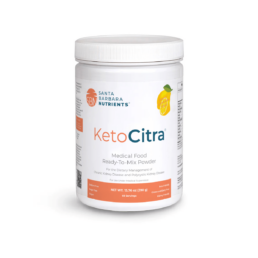As we delve deep into countless medical journals to uncover the latest on Integrative Medicine’s approach to kidney health, we are always reminded of the value of your time. Our commitment remains steadfast in curating and succinctly summarizing these vital studies for you. Welcome to the June Research and News.
Impact of Propionate and Butyrate on Chronic Kidney Disease Progression
The study, spearheaded by Viviana Corte-Iglesias and her team, is a significant contribution to the field as it delves into the protective roles of short-chain fatty acids (SCFAs), specifically propionate and butyrate, against chronic kidney disease (CKD).
The research evaluated SCFA levels in 54 CKD patients at varying disease stages, revealing that fecal levels of propionate and butyrate decrease as CKD progresses, correlating with worsening clinical markers such as serum creatinine and estimated glomerular filtration rate.
The study also employed genome-wide expression assays to show that propionate and butyrate can significantly reduce inflammatory gene expression in tubular cells under stress.
In addition, a pre-clinical mouse model demonstrated that administering these SCFAs either before or shortly after kidney injury could prevent or slow the progression of renal damage, reduce inflammation, and improve long-term kidney function.
Why is this important?
This research highlights the potential of propionate and butyrate, naturally occurring microbial metabolites, as therapeutic agents in CKD management. By demonstrating their ability to modulate inflammatory responses and improve renal outcomes in a disease model, the study opens new avenues for CKD treatment strategies that leverage the gut-kidney axis.
These findings emphasize the importance of dietary and gut microbial factors in kidney health and support the development of SCFA-based interventions to halt the progression of CKD, offering a promising direction for future Integrative clinical applications.
Permitted Lead Levels in US Drinking Water May Pose Hematologic Risks for Kidney Failure Patients
In a cross-sectional study led by John Danziger, MD, MPhil, the hematologic effects of low-level lead exposure from household water were examined in patients with advanced kidney disease, who are particularly vulnerable to environmental toxins.
The study involved 6404 individuals undergoing dialysis. It revealed that those exposed to higher levels of lead in drinking water required increased dosages of erythropoiesis-stimulating agents (ESAs) and had lower hemoglobin concentrations.
The study also looked at 2648 patients with advanced kidney disease who are not on dialysis. It found that these patients are also more likely to have lower hemoglobin concentrations when exposed to allowable higher levels of lead in drinking water. This was especially more pronounced when there is also iron deficiency.
The analysis identified a clear association between higher household water lead levels and increased hematologic toxicity, as measured by ESA dosing and hemoglobin levels.
This suggests that even the low levels of lead commonly found in US household water can have significant adverse health impacts on individuals with kidney disease.
Why is this important?
This study highlights the critical health risks posed by seemingly safe levels of lead in drinking water, particularly for individuals with chronic kidney disease.
These findings challenge the adequacy of current water safety standards and emphasize the need for stricter regulations and better protective measures for vulnerable populations.
By demonstrating the tangible effects of environmental lead exposure on a susceptible group, the research calls for immediate public health actions to mitigate lead contamination in drinking water and protect public health.
Therefore, kidney patients should strive to drink only filtered water using trusted filtration systems.
Impact of Preterm Birth on Glomerular Disease Outcomes Across Ages
Jaya Isaac and colleagues conducted an analysis within the Cure Glomerulonephropy (CureGN) cohort to evaluate the long-term effects of preterm birth (<37 weeks’ gestation) on glomerular disease outcomes in both children and adults.
The study incorporated 2,205 term and 235 preterm participants, revealing significant findings regarding disease progression and genetic predispositions.
Notably, preterm individuals showed a higher prevalence of Focal Segmental Glomerulosclerosis (FSGS) and APOL1 high-risk genotypes compared to their term counterparts.
Furthermore, the preterm group exhibited quicker progression to significant kidney function decline or kidney failure, and they were less likely to achieve complete remission from proteinuria.
Why is this important?
This study underscores the long-term renal risks associated with preterm birth, highlighting a critical need for targeted monitoring and early intervention strategies for those born preterm.
By establishing a link between preterm birth and more aggressive forms of glomerular diseases, the research signals the necessity for enhanced clinical vigilance and potentially tailored Integrative treatment approaches in this vulnerable population.
Join us to end the kidney disease epidemic
Link Between Physical Activity Intensity, Genetic Predisposition, and Kidney Stone Disease Risk
Yashu Liu and colleagues conducted a comprehensive study within the UK Biobank cohort to evaluate the impact of physical activity intensity on kidney stone disease (KSD), taking into account genetic susceptibility.
This prospective study involved 80,473 participants. It assessed total physical activity (TPA), moderate-to-vigorous intensity physical activity (MVPA), and light-intensity physical activity (LPA) through accelerometers.
A polygenic risk score (PRS) was also developed to gauge genetic risk for KSD.
Over an average follow-up of 6.19 years, the study found that higher quartiles of physical activity across all intensity levels were associated with significantly lower risks of developing kidney stone disease.
Participants in the highest activity quartiles had about a 34- 50% reduced risk compared to those in the lowest activity quartiles, even when accounting for genetic predisposition to KSD.
Why is this important?
This research provides robust evidence supporting the protective effects of physical activity against the development of kidney stones, irrespective of genetic risk.
The findings emphasize the importance of lifestyle modifications as a preventive strategy against kidney stones, potentially influencing public health guidelines and clinical practices regarding KSD management and prevention.
This study also highlights the need for further investigation into the mechanisms by which physical activity mitigates the risk of kidney stones, thereby enriching our understanding and potentially guiding more targeted interventions.
Review article of the month
Vascular and valvular calcifications in chronic kidney disease
Vascular and valvular calcifications contribute to cardiovascular complications and mortality in individuals with chronic kidney disease (CKD). Effective treatments to reduce calcification are ambiguous.
This review explores the underlying pathophysiological mechanisms behind vascular and valvular calcifications, examines the actions of various treatment strategies, and presents recent findings from interventional studies.
You can download the full PDF here.
Join here to receive FREE monthly updates on the latest research in Integrative Nephrology and tips on managing kidney disease straight to your inbox.
We would love to hear your feedback. Let us know what you think of these educational materials and if you like us to focus on specific topics. Please email us at info@inkidney.com.







